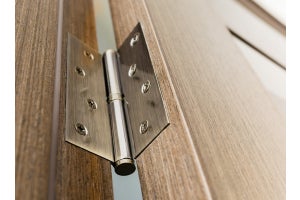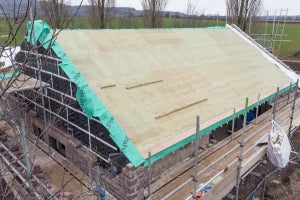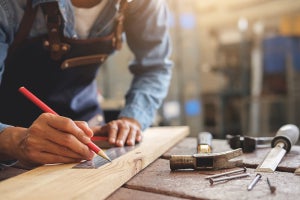Blog
-
November 10, 2025
When it comes to fitting a new door, most of us think about the style, finish, or material first — oak, pine, glazed, or panelled. But there’s another essential element that often goes unnoticed: ironmongery for doors. It might not be the star of the show, but without it, your doors simply wouldn’t function. So, what exactly is ironmongery, and why is it such an important part of any doorway?
What Does ‘Ironmongery’ Actually Mean?
In simple terms, ironmongery refers to all the metal fittings and accessories that make a door work — the bits that help it open, close, lock, and look good while doing so. The word itself dates back centuries, originally describing products made by blacksmiths from wrought iron. Today, however, modern ironmongery includes materials such as stainless steel, brass, aluminium, and even zinc, designed for both functionality and style.
When
-
-
October 19, 2025
When it comes to building a strong, reliable fence, the quality of your stakes makes all the difference. Fence stakes form the foundation of any agricultural or garden fencing project, holding everything in place and ensuring the structure lasts for years to come. At Mill Timber Direct, one of the most popular options for farmers, estates and landowners, is the Platinum Fence Stake.
In this guide, we’ll cover what Platinum Fence Stakes are, the benefits they offer, how long they last, and why they’re an excellent choice for your next fencing project.
What Are Platinum Fence Stakes?
Platinum Fence Stakes are premium-quality timber stakes designed to deliver long-lasting performance in all types of agricultural fencing projects. They are pressure-treated to NHSS4 (National Highways Treatment Specification), with a thirty year expected service life; this is a very high specification, which exceeds the typical UC4 treatment level used
-
September 24, 2025
Water repelling plywood is precisely as it sounds: structural plywood designed to shrug off rain and site moisture during build, so the sheet keeps its shape and strength while work carries on. We see it as a practical upgrade for floors, roofs and wall sheathing when the programme won't wait for a clear forecast. Instead of worrying about brief showers affecting walls or roof panels during installation, you can fit the boards and move on, confident that the sheet will perform as intended and keep the build on schedule.
-
August 27, 2025
When you're working on a construction or DIY project, choosing the right timber can make all the difference to the strength, durability, and overall finish of the build. One of the most versatile and widely used types is carcassing timber. It's a term you'll often hear in the trade, but if you're new to it, you might be wondering exactly what it means and how it's used. Let's take a closer look.
What is Carcassing Timber?
Carcassing timber refers to structural-grade softwood that's used in construction, where the timber will be hidden from view once the build is complete. It's graded for strength rather than appearance, so while it may have knots, colour variations, and other natural markings, it's perfectly suited to the jobs it's designed for.
Typically, carcassing timber is made from softwoods such as spruce, pine,
-
July 23, 2025
When it comes to enhancing your garden or carrying out landscaping projects, wooden sleepers are a popular and versatile material. They're commonly used for retaining walls, raised beds, borders, steps, and even garden furniture. But with a variety of wooden sleepers available on the market, knowing which type is right for your needs can be confusing. This guide breaks down the main types of wooden sleepers, softwood, hardwood, and treated options to help you make an informed choice.
Softwood Sleepers
Softwood sleepers, typically made from pine or spruce, are among the most commonly used and cost-effective options. They are generally pressure-treated with preservatives to improve their resistance to rot and insect attack. This makes them ideal for most garden projects, including raised beds, borders, and decorative edging.
-
June 24, 2025
Timber cladding brings warmth, character, and a timeless finish to our homes. It's a natural choice for those of us who value aesthetics as much as function. However, like all things natural, timber needs care to stay in top condition. In this guide, we'll share our best advice for timber cladding maintenance, with hands-on tips you can use yourself, even if you're new to home improvements.
Why Timber Cladding Needs a Little TLC
Wood is a living, breathing material. That's part of its appeal, but it also means it's vulnerable to the elements. Sun, rain, frost and even air pollution can all take their toll. Without regular upkeep, cladding can fade, warp, crack or suffer from mould and rot. That's why it's important to stay on top of maintenance. It helps protect the timber, extend its life, and keep our homes looking great.
Step 1: Inspect Regularly
We recommend giving your timber cladding a once-over
-
May 29, 2025
Summer is a time when your garden really comes alive, and it's the perfect opportunity to tackle those important jobs that will keep your outdoor space looking fantastic all season long. After a cold winter and wet spring, many garden features need some attention to get them back to their best. At Mill Timber Direct, we know how much difference proper garden maintenance can make to a home. We stock everything you need for garden projects, from basic repair materials to complete makeover supplies. Here are the key jobs we recommend prioritising this summer to make the most of your outdoor space.
Getting Your Fence Back to Its Best
Your garden fence probably shows the most obvious signs of winter damage, which makes it a great place to start your summer garden refresh. Many fences just need a really good clean to look much better. You can use a pressure
-
April 15, 2025
Working out how much timber cladding you need for your project is actually quite simple. With the right formula and a bit of planning, you'll avoid running short or wasting money on excess materials.
The Simple Cladding Calculation Method
To figure out how many linear metres of cladding you need, you just need to know two things:
The total area you want to cover (in square metres)
The coverage per board of your chosen profile (in metres)
Then, you will need to use this formula: Total area (m²) ÷ Coverage per board (m) = Linear metres needed
Let's take a look at an example for a 72m² project comparing
-
March 30, 2025
A dull, drab garden may be a feature of the winter months, but as spring approaches, it's time to start sprucing up your outdoor space. There are plenty of creative ways that you can give your garden the makeover it deserves without breaking the bank or completely overhauling its current design. From upgrading shabby fencing to adding fun features, we'll share how you can get started on creating your dream garden.
Get Planning
Start by really scrutinising your space. Take a look at your current layout, the borders, paths, shrubs, plants and boundary fencing. Cast your eye over your pots, benches, paving slabs and patio area, and measure up those areas you'd like to improve.
Feature Fencing
Fixing up your fencing







